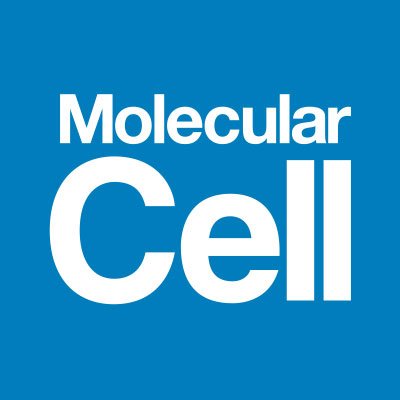
Michael Murphy
@MMurphyCUNY
Followers
114
Following
5K
Media
10
Statuses
1K
New York-based postdoc in molecular biology
Joined December 2010
Many thanks also to our collaborators, in particular Mythily Ganapathi who introduced us to some of the early cases.
0
0
1
These findings challenge the common view that autosomal recessive diseases result solely from loss-of-function mutations. Instead, we propose a model where gain-of-toxicity contributes to disease pathogenesis. We welcome feedback and discussion.
1
0
0
Using isogenic human cardiomyocyte-like cells, we confirm that hotspot RPL3L mutations cause ribosome depletion and severe growth defects, distinct from simple RPL3L loss-of-function.
1
0
0
Unlike in KO mice, where RPL3 compensates for the absence of RPL3L, we observe no RPL3 upregulation in patient hearts, likely worsening ribosome loss and cellular dysfunction.
1
0
0
Hotspot RPL3L mutations mislocalize to the nucleus, disrupt ribosome biogenesis by sequestering 28S rRNA, and interfere with essential ribosome assembly factors. This leads to a shortage of functional 60S ribosomal subunits.
1
0
0
Our key finding: RPL3L-linked DCM is driven by toxic hotspot mutations, rather than simple loss-of-function (LoF). Patients typically inherit: ✅ One hotspot toxic mutation (D308N, G27D) ✅ One LoF mutation (truncation, splice-site, or low-pathogenicity missense)
1
0
0
In contrast to expectations, RPL3L knockout (KO) mice show only mild cardiac defects. This suggests that disease-causing RPL3L mutations do more than simply disrupt ribosome function.
1
0
1
The heart relies on a muscle-specific ribosome, replacing the core ribosomal protein RPL3 with its paralog, RPL3L. While its function remains poorly understood, mutations in RPL3L lead to a severe, neonatal-onset form of DCM.
1
0
0
Excited to share our new preprint from the @wu_xuebing lab: https://t.co/qvJ1gdN7N3 In it, we identify a gain-of-toxicity mechanism in RPL3L-linked neonatal dilated cardiomyopathy (DCM), challenging the idea that recessive diseases are primarily caused by loss-of-function.
biorxiv.org
The heart employs a specialized ribosome in its muscle cells to translate genetic information into proteins, a fundamental adaptation with an elusive physiological role[1][1]–[3][2]. Its significance...
2
0
12
U.K. approves world’s first CRISPR-based medicine, giving greenlight to therapy for sickle cell, thalassemia https://t.co/4g3XA2Bxs4 via @statnews
statnews.com
Regulators in the U.K. on Thursday approved a CRISPR-based medicine to treat both sickle cell disease and beta thalassemia, making it the world’s first therapy based on the revolutionary gene-editing...
1
58
240
Base and prime editors induce double-strand breaks, deletions and translocations in hematopoietic cells
3
52
233
The #gnomAD team is proud to announce the release of gnomAD v4! The v4 dataset includes 730,947 exomes & 76,215 genomes, which is ~5x larger than the v2 & v3 releases combined, & includes nearly 120K indivs of non-European genetic ancestry https://t.co/YKXIFlZwSi
#ASHG23 (1/11)
6
254
663
Very excited to share our work on cancer nanomedicine now out in @ScienceMagazine. This was a really fun and collaborative project co-led by @natalie_boehnke and supported by an amazing group of scientists @kochinstitute @broadinstitute @DFBC_PedCare
science.org
A pooled human cell line screening identified genomic nanoparticle trafficking networks and potential biomarkers.
7
35
178
Stressful steps: Progress and challenges in understanding stress-induced mRNA condensation and accumulation in stress granules
cell.com
Stress granules (SGs), canonical membraneless organelles, have seen a surge of activity in identifying their protein/RNA components and biophysical underpinnings. Glauninger et al. review our...
0
13
64
Are you thinking about performing 40S ribosome footprinting (TCP-seq) or even selective 40S/80S ribosome footprinting (Sel-TCP-seq)? It can seem daunting and too complex 🧐 For this reason we have now published a comprehensive summary of the method(s): https://t.co/fEC0TeLnRu
nature.com
Nature Protocols - This extension of the TCP-seq protocol describes procedures for selective profiling of 40S and 80S ribosome subpopulations bound by a factor of interest, permitting detailed...
2
19
63
SHAME ON @illumina. All my labs 150+ iseq and novaseq runs deleted off @BaseSpace. Why? I exceeded 1 TB and didnt check my lab's gmail. There is apparently nothing they can do now. All my lab's data is gone ... I have some backups ...
3
6
18
"Thirteen dubious ways to detect conserved RNA structure" W Gao, A Yang, E Rivas. https://t.co/CoLodcNfk4 Is it a conserved RNA structure, or not? ...or can we even tell?
1
68
250
I pretty regularly share the super plots paper by @samjlord and @MullinsLab with new core users, lab members, and collaborators. It has one of my favorite figures of all time. https://t.co/bPZ0oYefoF
9
66
378
VASA-seq sequences total RNA in single cells, revealing non-coding expression and splicing patterns
nature.com
Nature Biotechnology - VASA-seq sequences total RNA in single cells, revealing non-coding expression and splicing patterns.
1
36
100
fascinating new paper in Cell shows that many insect genomes harbor HUNDREDS of genes derived from bacteria and acquired at some point through horizontal gene transfer among these, a gene from Listeria essential for male butterfly mating behavior https://t.co/bwUi5ntGQE
1
33
130














